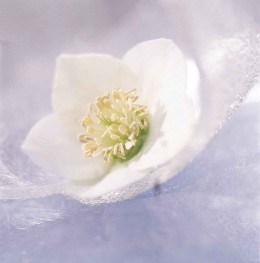
info about the flowers & plants association |
| the latest events in the flower world |
view the latest flower fashion trends |
green & gorgeous – boost your wellbeing with houseplants |
advice on where to buy & recommended retailers |
data & details about the flower industry |
how
to join and what benefits we can offer you as a member |
for
journalists & the media – what we can do for you |
index
of pages on this site to aid your navigation |
|
Hellebore
Name: Pronounced HELL-e-bore
and also called Christmas Rose the botanical name is Helleborus. Description: The flowers' translucent petals and dotty stamens, combined with delicately pointed leaves, give the flower the appearance of a wild dog-rose. Smooth olive-green stems only reach around 20cms and give the flower a very dainty appearance. Colour: H. niger is either bright purest white, or a warm deep purple. H. corsicus has green or cream bell-like cups in clusters, while H. orientalis has speckled and streaked flowers in unusual shades of cream, green, purple and pink. Availability: November to January. Varieties: As cut flowers hellebores come in three main species - Helleborus niger, the Christmas rose; H. orientalis, the Lenten rose and H. corsicus Care Tips: Hellebores are short-lived flowers but very beautiful nonetheless. They benefit from a long drink before arranging and keeping them cool will prolong their life. Despite its beauty, the black roots of H. niger are extremely poisonous , so although it is safe to handle, hands should be washed after handling it. Trivia: Facts: The flower is used for winter decorations particularly in Scandinavia Folklore: The cornish refer to the Christmas rose as "The Virgin's Mantle". In medieval times it was said to be good for breaking bad spells and curses and was often planted near the front door. Medicinal: H. niger was first described in a "herbal" in 1597, it was then known as the Christmas Herb or the Christmas Flower. Nicholas Culpeper's legendary 17th century herbal refers to it. It was regarded as a suitable treatment for insanity and depression. It was first referred to as the Christmas Rose in the 18th century because of its resemblance to the single wild rose (dog-rose)
| |
 |